Abstract
With the help of a surgical nurse and using data-processing techniques, a prospective clinical study was conducted to determine the wound infection rate in two hospitals in Calgary. The overall sepsis rate was 5.2% and the clean wound rate 3.5%. The latter is the more meaningful figure as it allows for comparison between hospitals, specialties and individuals and is a good guide for hospital morbidity reviews. The groundwork for succeeding wound infection is laid in the operating theatre, and it is believed that wound infection would be reduced more by attention to Halsted's principles than by more rigid aseptic techniques. It is estimated that wound sepsis costs the Province of Alberta 1.5 million dollars per year for hospitalization alone. This amounts to roughly $1 per person per year. The annual cost of a prospective study such as the present one is approximately $7000. This is equivalent to the cost of hospitalizing 24 patients with infected wounds for one week (at $300 per week). One dividend of a prospective study is an associated reduction in infection rate. This reduction more than pays for the cost of the program.
Full text
PDF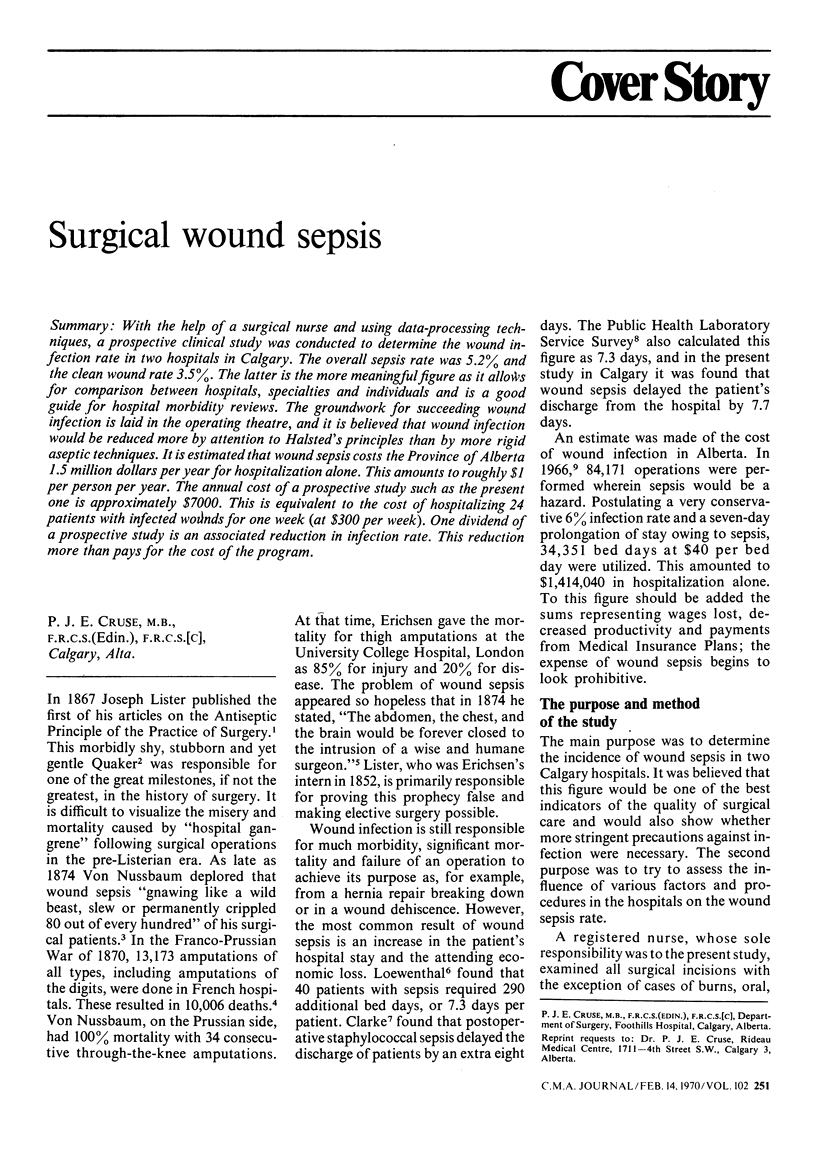
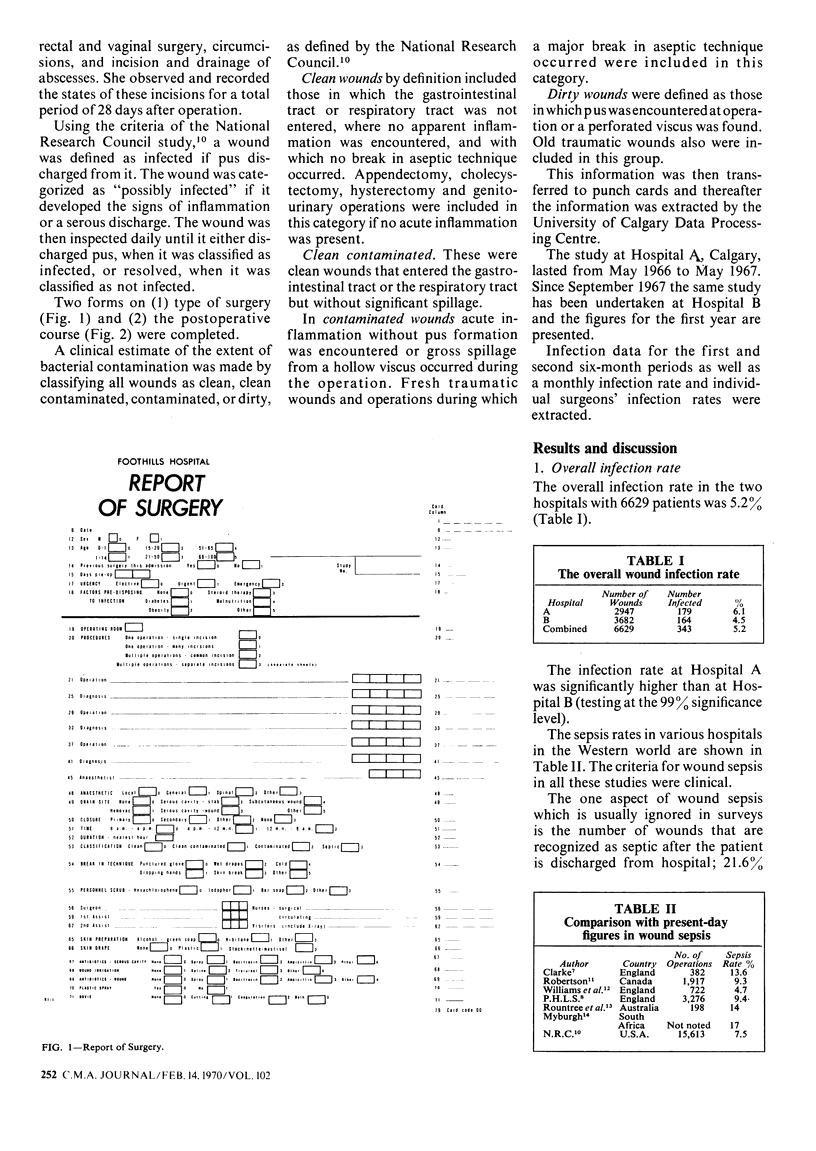
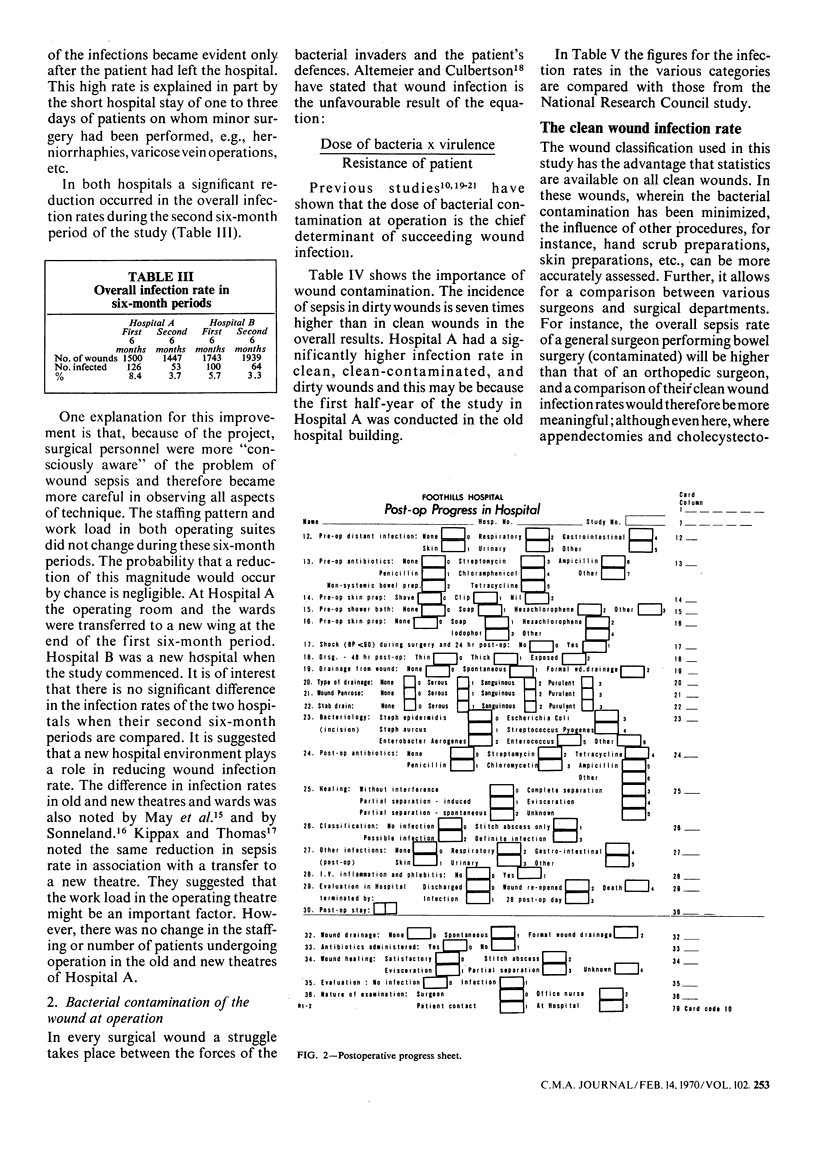
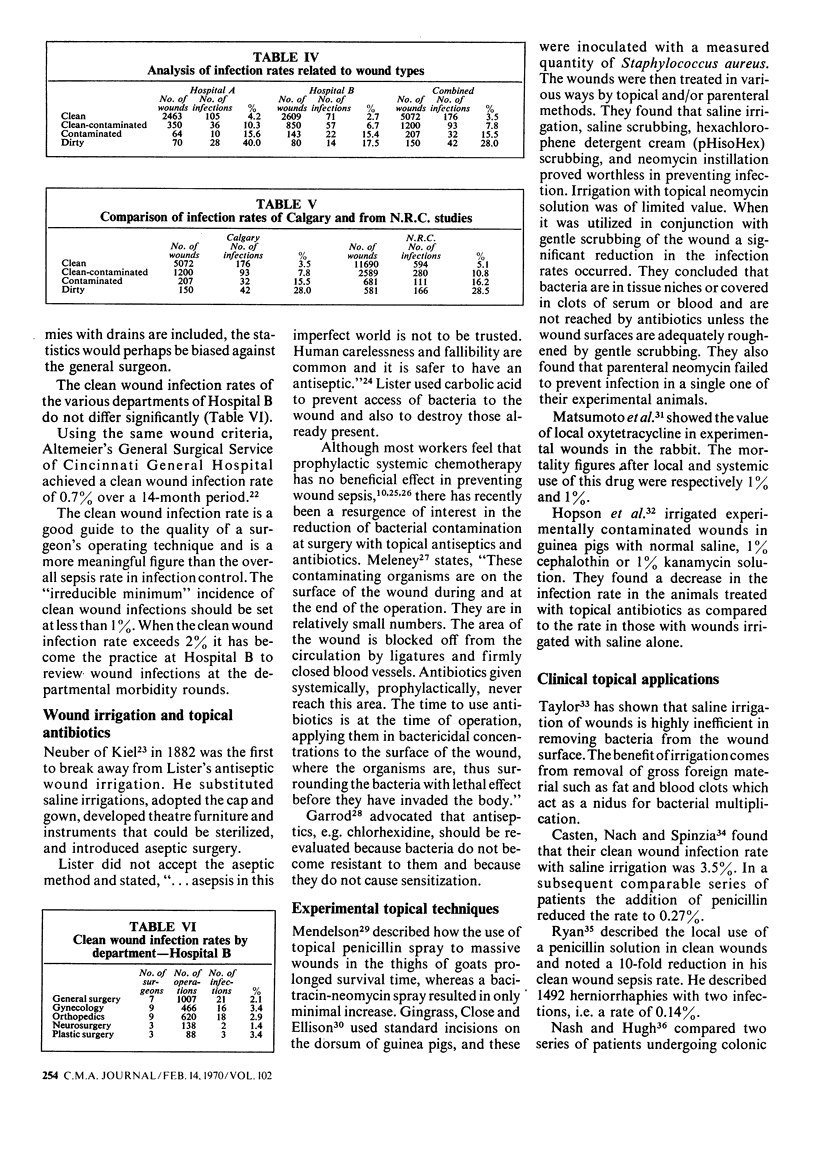
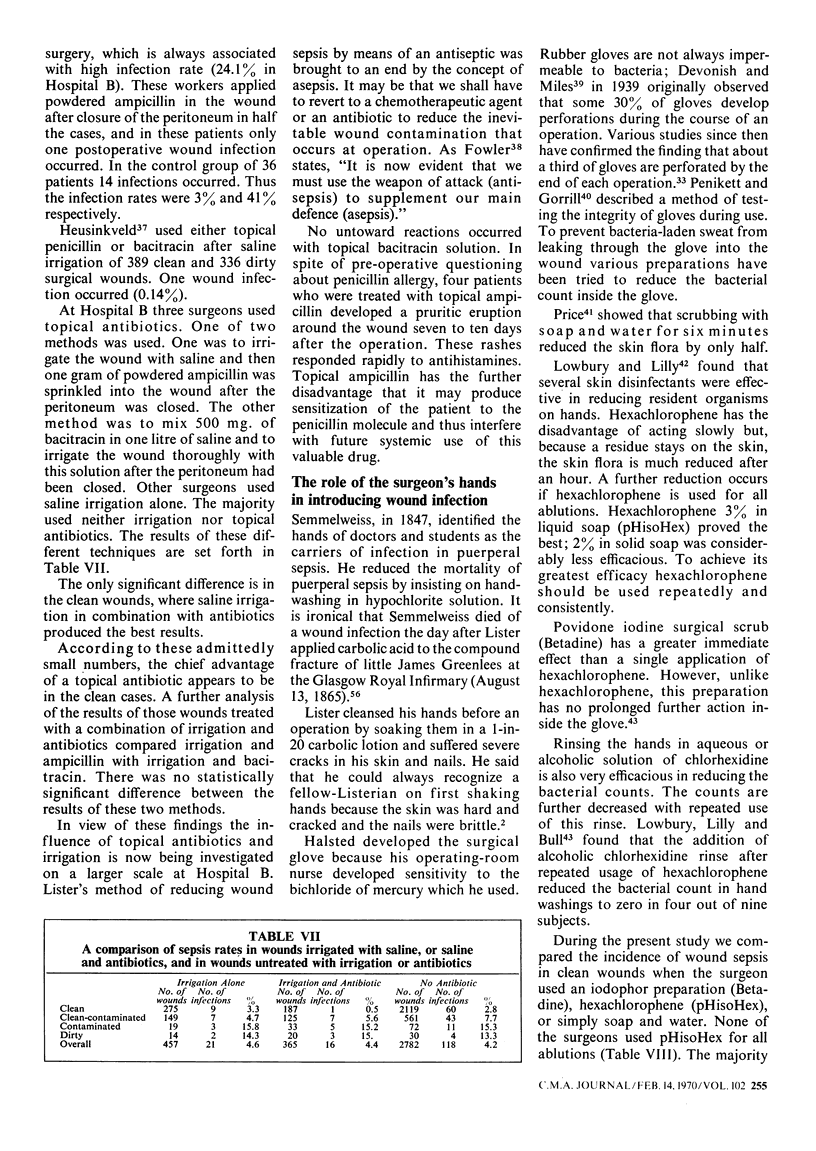
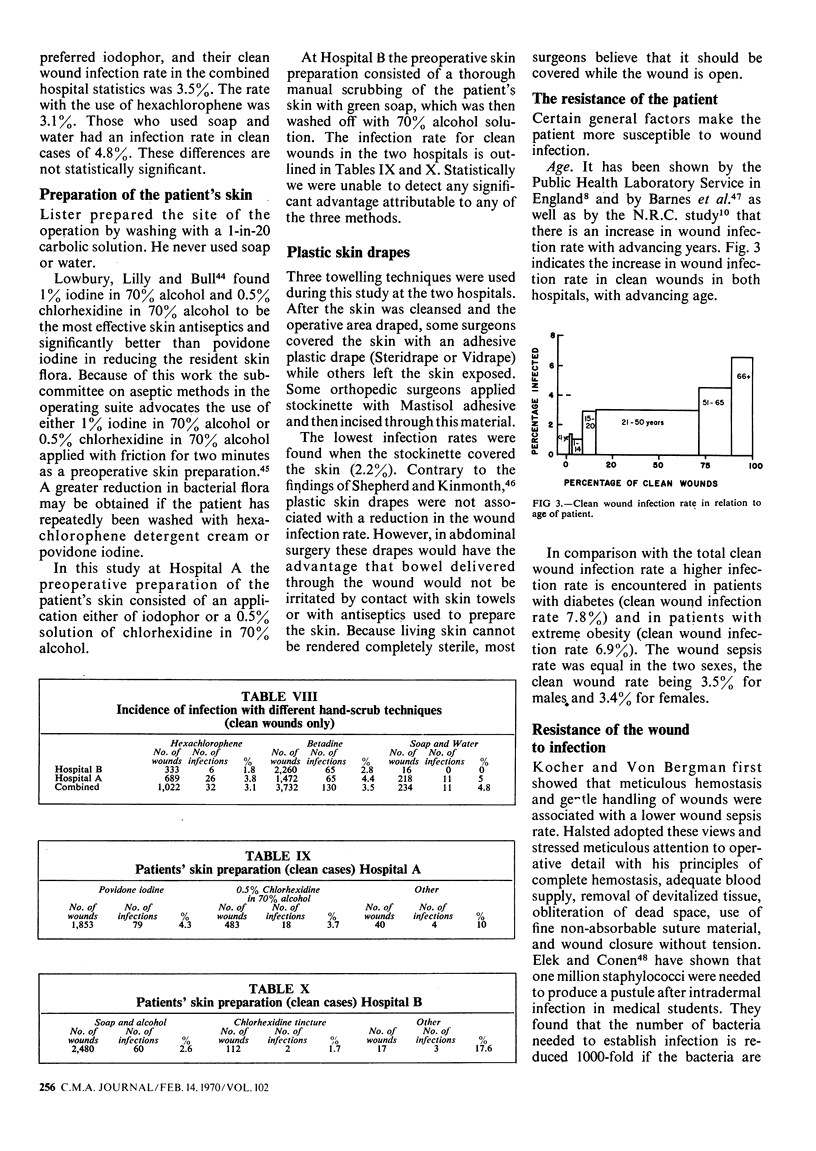
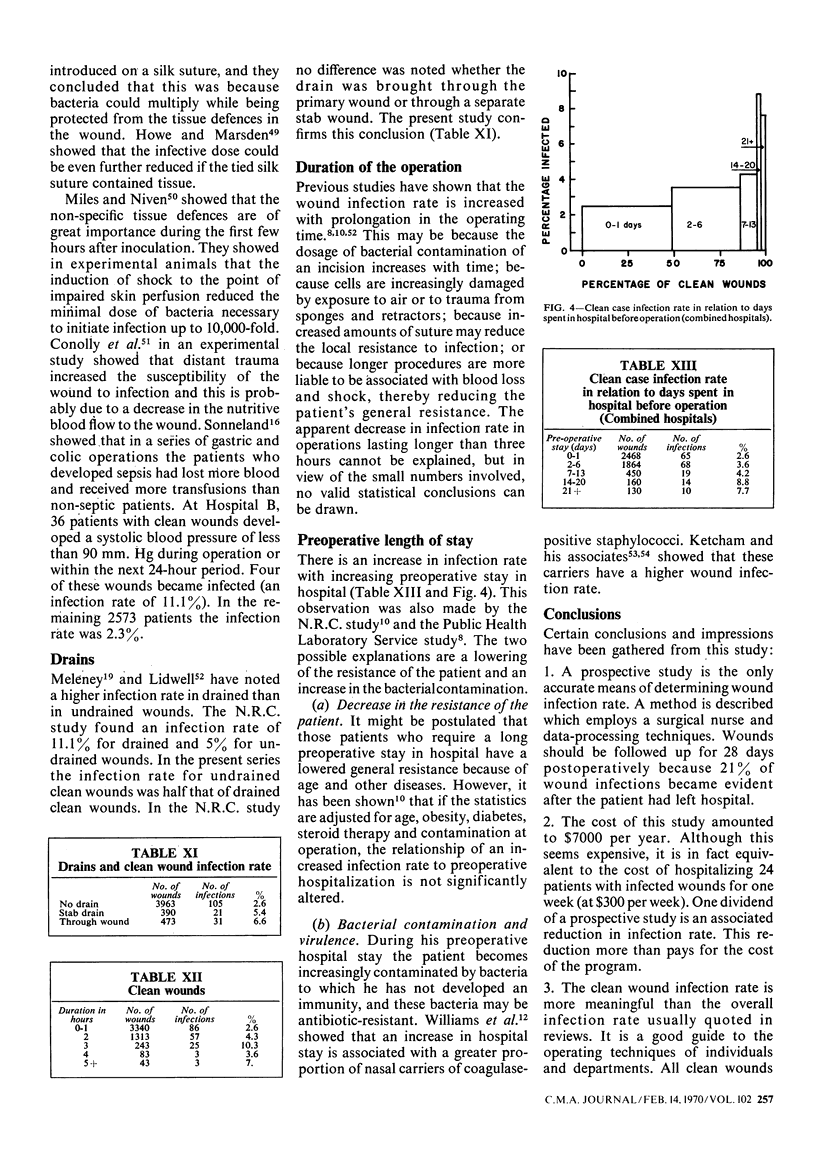
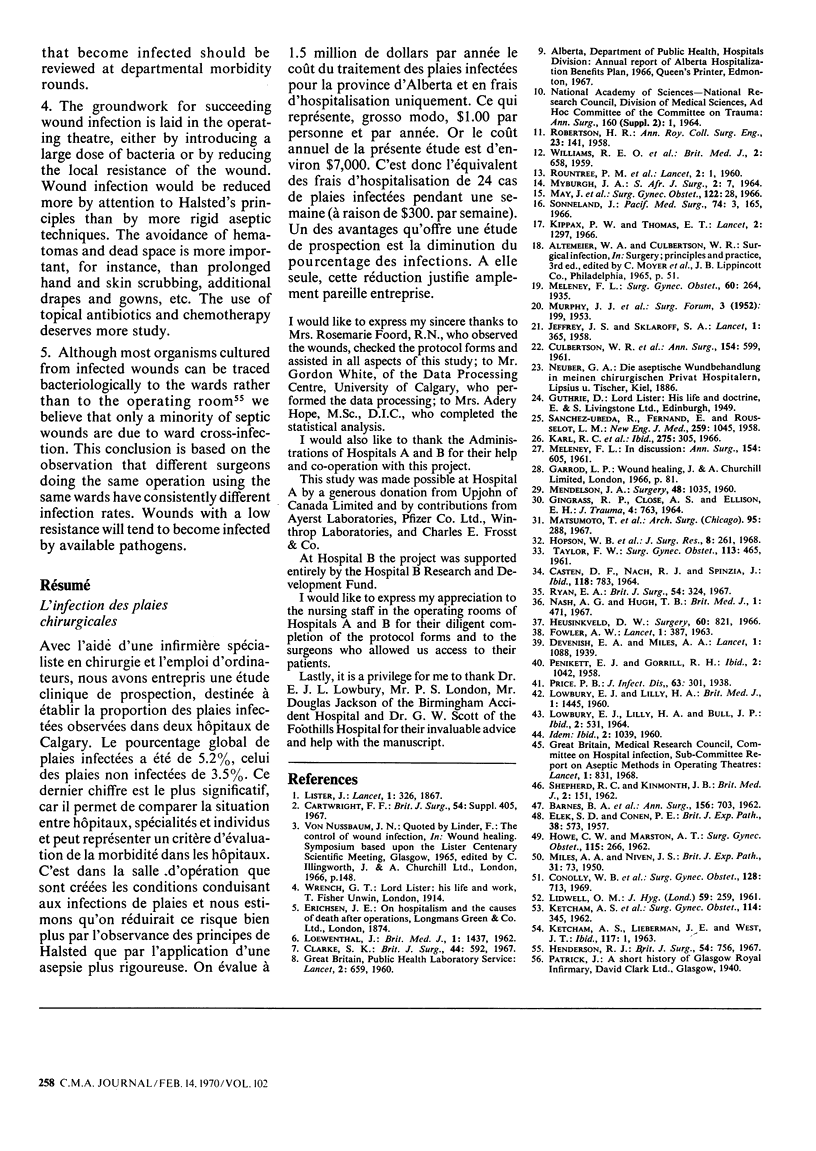
Selected References
These references are in PubMed. This may not be the complete list of references from this article.
- BARNES B. A., BEHRINGER G. E., WHEELOCK F. C., WILKINSEW Surgical sepsis: analysis of factors associated with sepsis following appendectomy (1937-1959). Ann Surg. 1962 Nov;156:703–712. doi: 10.1097/00000658-196211000-00001. [DOI] [PMC free article] [PubMed] [Google Scholar]
- CASTEN D. F., NACH R. J., SPINZIA J. AN EXPERIMENTAL AND CLINICAL STUDY OF THE EFFECTIVENESS OF ANTIBIOTIC WOUND IRRIGATION IN PREVENTING INFECTION. Surg Gynecol Obstet. 1964 Apr;118:783–787. [PubMed] [Google Scholar]
- CULBERTSON W. R., ALTEMEIER W. A., GONZALEZ L. L., HILL E. O. Studies on the epidemiology of postoperative infection of clean operative wounds. Ann Surg. 1961 Oct;154:599–610. doi: 10.1097/00000658-196110000-00010. [DOI] [PMC free article] [PubMed] [Google Scholar]
- Conolly W. B., Hunt T. K., Sonne M., Dunphy J. E. Influence of distant trauma on local wound infection. Surg Gynecol Obstet. 1969 Apr;128(4):713–718. [PubMed] [Google Scholar]
- ELEK S. D., CONEN P. E. The virulence of Staphylococcus pyogenes for man; a study of the problems of wound infection. Br J Exp Pathol. 1957 Dec;38(6):573–586. [PMC free article] [PubMed] [Google Scholar]
- GINGRASS R. P., CLOSE A. S., ELLISON E. H. THE EFFECT OF VARIOUS TOPICAL AND PARENTERAL AGENTS ON THE PREVENTION OF INFECTION IN EXPERIMENTAL CONTAMINATED WOUNDS. J Trauma. 1964 Nov;4:763–783. doi: 10.1097/00005373-196411000-00004. [DOI] [PubMed] [Google Scholar]
- HOWE C. W., MARSTON A. T. A study on sources of postoperative staphylococcal infection. Surg Gynecol Obstet. 1962 Sep;115:266–275. [PubMed] [Google Scholar]
- Henderson R. J. Staphylococcal infection of surgical wounds: the source of infection. Br J Surg. 1967 Sep;54(9):756–760. doi: 10.1002/bjs.1800540904. [DOI] [PubMed] [Google Scholar]
- Heusinkveld D. W. Is there an "irreducible minimum" rate of wound infection? Surgery. 1966 Oct;60(4):821–823. [PubMed] [Google Scholar]
- JEFFREY J. S., SKLAROFF S. A. Incidence of wound infection. Lancet. 1958 Feb 15;1(7016):365–368. doi: 10.1016/s0140-6736(58)90986-3. [DOI] [PubMed] [Google Scholar]
- KETCHAM A. S., BLOCH J. H., CRAWFORD D. T., LIEBERMAN J. E., SMITH R. R. The role of prophylactic antibiotic therapy in control of staphylococcal infections following cancer surgery. Surg Gynecol Obstet. 1962 Mar;114:345–352. [PubMed] [Google Scholar]
- Karl R. C., Mertz J. J., Veith F. J., Dineen P. Prophylactic antimicrobial drugs in surgery. N Engl J Med. 1966 Aug 11;275(6):305–308. doi: 10.1056/NEJM196608112750604. [DOI] [PubMed] [Google Scholar]
- Kippax P. W., Thomas E. T. Surgical wound sepsis in a general hospital. Lancet. 1966 Dec 10;2(7476):1297–1300. doi: 10.1016/s0140-6736(66)91704-1. [DOI] [PubMed] [Google Scholar]
- LIDWELL O. M. Sepsis in surgical wounds. Multiple regression analysis applied to records of post-operative hospital sepsis. J Hyg (Lond) 1961 Jun;59:259–270. doi: 10.1017/s0022172400038900. [DOI] [PMC free article] [PubMed] [Google Scholar]
- LOEWENTHAL J. Sources and sequelae of surgical sepsis. Br Med J. 1962 May 26;1(5290):1437–1440. doi: 10.1136/bmj.1.5290.1437. [DOI] [PMC free article] [PubMed] [Google Scholar]
- LOWBURY E. J., LILLY H. A., BULL J. P. METHODS FOR DISINFECTION OF HANDS AND OPERATION SITES. Br Med J. 1964 Aug 29;2(5408):531–536. doi: 10.1136/bmj.2.5408.531. [DOI] [PMC free article] [PubMed] [Google Scholar]
- LOWBURY E. J., LILLY H. A. Disinfection of the hands of surgeons and nurses. Br Med J. 1960 May 14;1(5184):1445–1450. doi: 10.1136/bmj.1.5184.1445. [DOI] [PMC free article] [PubMed] [Google Scholar]
- MENDELSON J. A. Topical therapy as an expedient treatment of massive open wounds. Experimental study. Surgery. 1960 Dec;48:1035–1047. [PubMed] [Google Scholar]
- MILES A. A., NIVEN J. S. F. The enhancement of infection during shock produced by bacterial toxins and other agents. Br J Exp Pathol. 1950 Feb;31(1):73–95. [PMC free article] [PubMed] [Google Scholar]
- MURPHY J. J., KUCHARCZUK J. B., BARET A., ELLIS H., ZINTEL H. A. A study of the contamination of surgical wounds occurring at operation. Surg Forum. 1953;(38TH):199–202. [PubMed] [Google Scholar]
- Matsumoto T., Hardaway R. M., 3rd, Dobek A. S., Noyes H. E. Antibiotic topical spray applied in a simulated combat wound. Arch Surg. 1967 Aug;95(2):288–294. doi: 10.1001/archsurg.1967.01330140126028. [DOI] [PubMed] [Google Scholar]
- Nash A. G., Hugh T. B. Topical ampicillin and wound infection in colon surgery. Br Med J. 1967 Feb 25;1(5538):471–472. doi: 10.1136/bmj.1.5538.471. [DOI] [PMC free article] [PubMed] [Google Scholar]
- PENIKETT E. J., GORRILL R. H. The integrity of surgical gloves tested during use. Lancet. 1958 Nov 15;2(7055):1042–1043. doi: 10.1016/s0140-6736(58)90535-x. [DOI] [PubMed] [Google Scholar]
- Ryan E. A. Wound infection prevention by topical antibiotics. Br J Surg. 1967 May;54(5):324–329. doi: 10.1002/bjs.1800540503. [DOI] [PubMed] [Google Scholar]
- SANCHEZ-UBEDA R., FERNAND E., ROUSSELOT L. M. Complication rate in general surgical cases; the value of penicillin and streptomycin as postoperative prophylaxis; a study of 511 cases. N Engl J Med. 1958 Nov 27;259(22):1045–1050. doi: 10.1056/NEJM195811272592201. [DOI] [PubMed] [Google Scholar]
- SHEPHERD R. C., KINMONTH J. B. Skin preparation and towelling in prevention of wound infection. Br Med J. 1962 Jul 21;2(5298):151–153. doi: 10.1136/bmj.2.5298.151. [DOI] [PMC free article] [PubMed] [Google Scholar]
- Sonneland J. Postoperative infection. II. Etiological factors. Pac Med Surg. 1966 May-Jun;74(3):165–169. [PubMed] [Google Scholar]
- TAYLOR F. W. An experimental evaluation of operative wound irrigation. Surg Gynecol Obstet. 1961 Oct;113:465–470. [PubMed] [Google Scholar]
- WILLIAMS R. E., JEVONS M. P., SHOOTER R. A., HUNTER C. J., GIRLING J. A., GRIFFITHS J. D., TAYLOR G. W. Nasal staphylococci and sepsis in hospital patients. Br Med J. 1959 Oct 10;2(5153):658–662. doi: 10.1136/bmj.2.5153.658. [DOI] [PMC free article] [PubMed] [Google Scholar]


